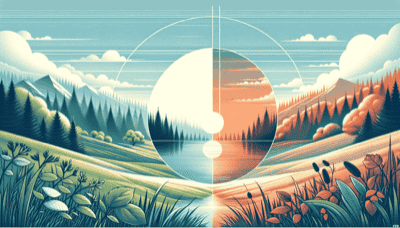We're here to help you keep count of the days to or since a date. Just click the button below and enter your chosen date to get started. Also choose the suggested days or search for a special day above #countingthedays

The March Equinox, also known as the Autumnal Equinox in the Southern Hemisphere, marks the moment when the sun crosses the celestial equator, heading northward. In New Zealand, this typically occurs on March 20th or 21st. It signifies the beginning of fall and is one of two days each year when day and night are approximately equal in length.
The concept of an equinox has been recognized since ancient times and is often associated with changes in seasons and traditional celebrations. However, specific historical traditions linked to the March Equinox in New Zealand are not as prominent as they are in other cultures due to its relatively recent human settlement and Western influence.
New Zealand does not have widespread cultural traditions that celebrate the March Equinox. Instead, it is acknowledged more for its astronomical significance rather than as a reason for traditional festivities. New Zealand's indigenous Māori culture celebrates Matariki (Pleiades) rising in late May or early June, signaling the start of the Māori New Year, rather than focusing on equinoctial events.
For most New Zealanders, the March Equinox passes without formal recognition or special activities. People may take note of it among other signs of seasonal change such as cooler temperatures or changing foliage. Gardeners use it as a cue for planting certain crops suited to autumn conditions. Environmental and educational groups sometimes use this time to raise awareness about seasonal changes and natural phenomena related to Earth's tilt and orbit.
In summary, while there might be individual acknowledgments of the day's significance by enthusiasts or educational institutions, there are no widespread public celebrations or traditions specifically associated with the March Equinox in New Zealand.